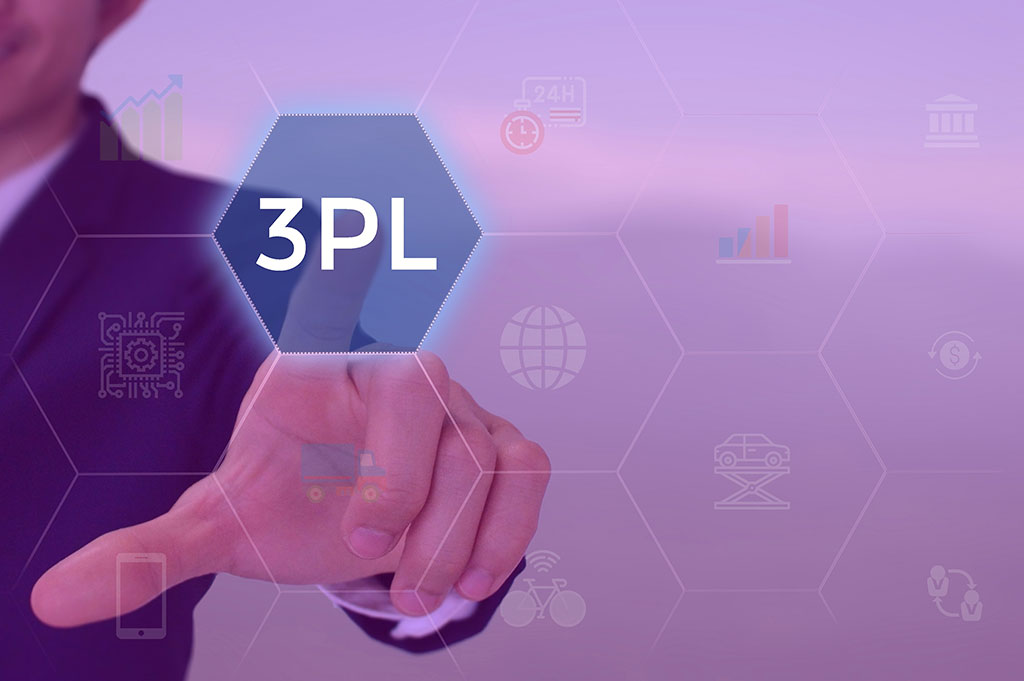The Future of 3PL

Over the past few years, the global supply chain has gone through plenty of ups and downs, and third-party logistics (3PL) companies have had to adapt. Between the COVID-19 pandemic and plenty of economic ups and downs across the world, the entire supply chain looks very different now than it did in 2019 – and we can expect things to continue to change.
In order to succeed in this current environment full of ups and downs, 3PL providers will need to become more flexible and adaptable. Here are some of the ways we can expect the 3PL market to change in the future.
Partnerships With 4PL Companies
As companies face new supply chain challenges, they will look for companies that go beyond just warehousing and shipping. Instead, they’ll want to work with 4PL companies that can provide comprehensive supply chain solutions from start to end.
Rather than just getting product from point A to point B, 4PL organizations work with end clients and 3PL providers to optimize the entire supply chain. This can include cutting back on costs, making delivery times more efficient, and coming up with creative shipping solutions when supply chain problems arise.
In the future, we can expect to see further partnership between 3PL and 4PL providers to offer the most efficient global supply chain management. Unilog is a 4PL provider that uses advanced technology to manage every step of the supply chain, from manufacturing all the way to the end delivery and even returns. This advanced technology makes it easier to manage the global supply chain remotely and with fewer people, something that has proved crucial in today’s labor market.
Adopting New Technology
In addition to these 4PL partnerships, 3PL companies will need to adopt new technology throughout their organizations. Automation and the Internet of Things will become particularly crucial as they make inventory and warehouse management more efficient. Implementing AI technology across the supply chain will proactively prevent mistakes from happening. This allows 3PL providers to manage larger delivery loads with fewer errors and less manual management.
Additionally, we can expect supply chain technology to continue evolving beyond what’s on the market right now. 3PL organizations will need to remain flexible and be prepared to adopt new technology to work as efficiently as possible.
More Customer Transparency
Technology has also made it easier to monitor the supply chain in great detail, and many customers prefer total transparency when it comes to their operations. This means that 3PL and 4PL providers will need to consistently monitor KPIs across the supply chain and proactively share this information with clients. Ongoing open communication also makes it easier to address problems when they do arise.
Recovering From The COVID-19 Pandemic
The COVID-19 pandemic caused heavy disruptions to the supply chain around the world, and we will continue to feel the effects of this for years to come. One example of this is the global semiconductor shortage. An inability to increase production coupled with explosive demand caused a shortage that is expected to impact several different industries for years to come.
To deal with the volatility of the current supply chain, 3PL companies will need to remain flexible. In addition to the COVID-19 pandemic, we’ve also seen military conflict and economic volatility in many places around the world. This means that 3PLs will need to work with their clients to build a diverse network of suppliers. When choosing suppliers, it’s important to consider factors like politics, weather, and social trends to build redundancy in your supply chain.
Risk management plans will also become crucial, as you may need to adjust your shipping strategy at a moment’s notice. In fact, many organizations have opted to stockpile items now in order to be prepared for potential shutdowns in the future.
Mobile Supply Chain Management
One trend that will likely continue in the future is a switch to mobile technology for supply chain management. Mobile apps make it easier to manage inventory, shipping routes, and deliveries from anywhere, allowing teams to work more efficiently. Mobile supply chain management can also help organizations cut back on paper usage and eventually transition to an all-digital supply chain.
Micro-warehousing
During the COVID-19 pandemic, many consumers and businesses turned to e-commerce providers to purchase important products. Although the pandemic has since slowed down and brick-and-mortar stores have reopened, this trend has remained. Consumers and businesses continue to expect fast delivery times for essential products.
To speed up delivery times, many 3PL providers have had to reconfigure their shipping networks. One way to do this is by micro-warehousing. This strategy involves placing smaller warehouses in urban areas with high demand and using them for specific types of products. This allows companies to offer faster delivery times.
Sustainability
Another key concern for 3PLs in the coming years is environmental sustainability. We’re already seeing the effects of climate change in many parts of the world, and there’s huge public pressure to operate in a more environmentally-friendly way. There are many ways to approach this – it might mean using recyclable packaging, switching to hybrid or electric vehicles, or powering warehouses using renewable energy sources.
Of course, this switch to sustainability won’t happen overnight. 3PL companies and their partners will need to assess their operations and slowly make changes based on current environmental impact as well as budgetary restrictions.
The shipping and logistics industries are experiencing changes quickly, but the future of 3PL is exciting. Advances in technology mean that 3PL providers will be able to automate more operations and ultimately provide better service to the end client. Partnering with 4PL organizations like Unilog make supply chain management even easier, both for 3PLs and end clients. Contact us to learn more about our comprehensive supply chain services.



